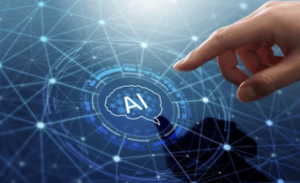If you were to inquire about Application Modernization from ten individuals, it’s probable that you would receive ten distinct responses. While numerous organizations assert their involvement in Application Modernization, the specific methods employed can differ significantly.
We delineate Application Modernization as the transformative process of reconceiving an already existing application, aiming to attain a cloud-native architecture that seamlessly aligns with present-day business requirements.
Frequently, during legacy migration, it is common to observe a tendency to prioritize maintaining feature parity with the old system. This can happen when modernization is perceived solely as a technical endeavour, neglecting the involvement of product or business aspects. Unfortunately, this approach overlooks an opportunity for organizations to eliminate unnecessary features that have burdened previous systems.
Although it may present challenges, organizations should continue its focus in assessing and identifying the capabilities that are no longer necessary. Simultaneously, it should realign the feature parity by reimagining the application in line with business needs. This process involves taking a comprehensive perspective to comprehend the current requirements of users, prioritizing those needs in relation to business outcomes and metrics, and implementing modern product development practices.
Application Modernization centers around a singular application or a closely defined group of applications, accomplished through either of the following approaches:
Application Modernization can be achieved through various strategies:
Replatforming to the cloud involves making minimal changes to enable the application to run in a cloud environment. For instance, if adopting a standardized cloud-based deployment model, such as containerization, brings operational benefits without requiring significant application modifications, replatforming becomes a suitable approach within the application portfolio.
Refactoring the application is advisable when there is a business need for product evolution, but the existing legacy application necessitates restructuring to accommodate it. For example, adding an API layer to a legacy application to expose its core assets would be a suitable refactoring strategy.
Rearchitecting the application entails embarking on a cloud-native rewrite, particularly for high-value legacy applications that undergo frequent changes. This approach unlocks the potential for product evolution and the development of new features. Additionally, it can be motivated by the goal of decoupling core business capabilities to enhance application stability or transitioning to a more coherent and
extensible application architecture.
Retiring specific feature sets should be considered to reduce application complexity, address technical debt, and eliminate capabilities that no longer provide business value.
When embarking on the journey of application modernization, it is crucial to go beyond the conventional “R” approach. This is an opportune moment to reimagine the application utilizing modern technologies and revitalize its purpose by incorporating enhanced functionalities. Our application modernization strategy encompasses both the traditional 4 R’s (Replatform, Refactor, Rearchitect, and Retire) and the augmented 2 R’s (Reimagine and Renew), ensuring a comprehensive and transformative approach to modernization.
Codincity 6 R strategy for application modernization

Reimagine applications by envisioning innovative possibilities and redefining their purpose to align with evolving business needs and technological advancements. By challenging traditional paradigms and embracing creative thinking, we strive to unlock the full potential of applications, driving transformative outcomes and delivering exceptional user experiences.
Renew application functionalities by leveraging cutting-edge technologies and implementing strategic improvements. Through careful analysis and meticulous planning, we identify areas for optimization and innovation, seeking opportunities to expand features, improve performance, and deliver a superior user experience. By enhancing application functionalities, we empower organizations to stay ahead of the curve, maximize productivity, and unlock new possibilities for growth and success in an ever-evolving digital landscape.”
This business-driven Application Modernization plays a pivotal role in shaping a promising future for your technology community. Its impact is twofold: it not only dismantles intricate legacy monolithic systems that only your seasoned experts comprehend but also enhances the appeal of collaborating with your team, making it an enticing opportunity for new talent to join.
The ultimate result is an immensely adaptable and valuable rendition of an application that you already rely on, equipped with the essential core functionality you require. This enhanced version is seamlessly delivered in the cloud, empowering developers to swiftly enhance and expand its capabilities. Most significantly, this transformation enables businesses to proactively drive change, ensuring they stay ahead of the curve before being compelled to do so.
Differentiators for Codincity approach to Application Modernization
Application Modernization extends beyond the straightforward process of migrating applications to the cloud. Each modernized application embodies a substantial cultural and operational transformation for developers, engineers, the organization as a whole, and even customers.
By partnering with us for an Application Modernization project, you gain access to a range of benefits, including:
A “Smart IT(eration)” approach: Facilitate the rapid delivery of value to your organization. The journey begins with a series of discovery exercises meticulously crafted to pinpoint the applications that have the potential to yield substantial and meaningful return on investment (ROI) when modernized. During this process, we delve deep into your core domain to identify pivotal business capabilities that hold significant value. Simultaneously, we assess technical factors such as the complexity of legacy application code, code hygiene, coupling, and opportunities for cost optimization. By combining these multidimensional inputs, we can determine the optimal starting point and construct a compelling modernization business case, aligning it with your product roadmap and overarching business strategy.
Business Centric: Recognizing the critical importance of modernization for businesses, our approach goes beyond mere replatforming, refactoring, and rearchitecting of applications. Instead, we focus on realigning them with your present and future business requirements, ensuring that the modernization process delivers the desired outcomes that best suit your organization.
Foundation for Future: As we embark on the journey of modernizing applications, our focus extends beyond immediate changes. Our goal is to establish a framework that facilitates seamless adaptation to evolving needs in the future. Through the utilization of evolutionary architecture approaches, Platform Thinking, extensive expertise in continuous delivery, and various other strategies, we lay the foundation for ongoing product evolution. This ensures that your applications remain flexible and easily adaptable as your organization’s requirements continue to evolve.
Cultural and process Change Leadership: Merely modernizing applications does not guarantee significant value and outcomes. Our role goes beyond that—we assist in resetting engineering teams to seamlessly adapt to the changes brought about by modernization. By doing so, we enable everyone to fully capitalize on the myriad of new cloud-native opportunities that arise, ensuring that your organization maximizes the potential benefits of the modernization process.
Proven Technology Leadership: We are dedicated to pioneering and developing innovative approaches to modernization on an ongoing basis. Our commitment to continuous improvement drives us to explore new methodologies, technologies, and best practices that can enhance the modernization process.
Kickstart modernization with a fast, ROI-driven starting point
By embracing Application Modernization, you can lay the groundwork for a successful transformation that propels your organization forward into the modern era. Our approach helps you to resetting your engineering teams with contemporary engineering practices, enabling you to fully leverage the advantages of cloud migration, swiftly achieve significant return on investment (ROI), and effectively compete with the emerging generation of cloud-native organizations.




